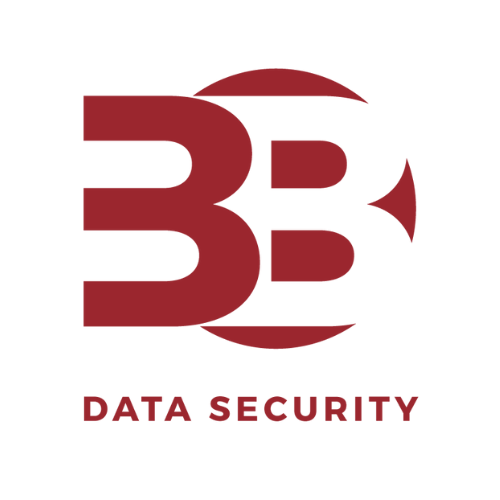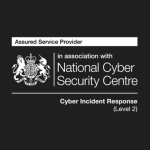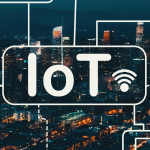Ransomware attacks have become increasingly sophisticated, causing significant disruptions and financial losses for individuals, businesses, and even government organisations.
Last year, Ransomware was involved in 25% of all breaches, costing organisations an average of $4.5 million (£3.5 million).
Understanding the rise of ransomware and its implications is crucial when it comes to protecting your organisation. In this blog post, we take a look at how ransomware works, why the rate of attacks is rising, and the measures you need to implement to keep your organisation protected.
What is Ransomware and How Does it Work?
Ransomware is a type of malicious software designed to infect computer systems and encrypt valuable files, rendering them inaccessible to the rightful owner.
Once the initial breach occurs, the ransomware quickly spreads across the network, encrypting files and paralysing entire systems.
Once the files are encrypted, the attacker demands a ransom, usually in cryptocurrency, in exchange for the decryption of the data. The attackers often demand the ransom in a tight timeframe, adding pressure and increasing the likelihood of victims paying up. Attackers will often use ransomware as part of a multi-pronged attack, exfiltrating data as well and threatening to release it. There’s no guarantee that the attacker will release or decrypt the data once the ransom has been paid.
Well-known Ransomware Attacks
Ransomware attacks often take down the entire operations of an organisation and leave massive financial repercussions. We’ve highlighted just a few of the ransomware attacks from the last couple of years and the impact they had:
Royal Mail
Back in January 2023, LockBit demanded a ransom payment of $80 million (£63 million) from Royal Mail. Royal Mail’s international shipping of parcels and letters through its post office branches came to a standstill.
NHS
A ransomware attack back in 2022 affected the NHS’s system used to dispatch ambulances, book out-of-hours appointments and issue emergency prescriptions. Not forgetting the WannaCry attack back in 2017 that led to thousands of cancelled appointments and left the NHS with a near-£100m bill.
Costa Rica
Last year, the President of Costa Rica declared a national emergency due to an ongoing Conti ransomware campaign against several Costa Rican government entities. Conti leaked data that allegedly contains information stolen from government agencies.
Colonial Pipeline
Colonial Pipeline is responsible for carrying gasoline and Jetfuel across America. In 2021, a ransomware attack forced the company to shut down operations. An emergency was declared in 17 states, and a ransom of 75 Bitcoin was paid to DarkSide under the supervision of the FBI.
Why Are Ransomware Attacks Rising?
The rise of ransomware can be attributed to multiple factors, but the main reason these attacks continue to rise is because they have proven to be highly lucrative for cyber criminals. The anonymous nature of cryptocurrencies allows attackers to receive ransom payments without fear of being easily traced. The potential for significant financial gains incentivises cyber criminals to continue developing and deploying ransomware.
Ransomware has evolved beyond simply encrypting files on individual computers. Attackers now target entire networks and organisations, maximising their potential profits through the impact of the attack.
The tools and techniques for launching ransomware attacks have become more accessible and user-friendly. Cyber criminals can purchase or rent ransomware-as-a-service (RaaS) platforms on the dark web, eliminating the need for advanced technical skills to deploy these attacks.
Ransomware attackers have also become more sophisticated in their methods. They employ social engineering techniques, such as phishing emails or deceptive websites, to trick individuals into downloading the malware onto their devices.
Many individuals and organisations still lack adequate cyber security measures to defend against ransomware attacks. Outdated software, weak passwords, and insufficient employee training on security best practices create vulnerabilities that attackers exploit. This poor ‘cyber hygiene’ facilitates attacks and contributes to the ease of any breach, ransomware related or not.
The rapid increase in remote working over the past few years has also had an impact on the rate of attacks and expanded the attack surface, with home networks and personal devices often having lower security standards than corporate networks. The proliferation of Internet-of-things (IoT) devices within home environments opens up more doors and methods of entry for the attackers to get a foothold of corporate data.
Key Statistics
- Ransomware was involved in 25% of all breaches last year – Verizon Data Breach Investigations Report
- The total cost of a single ransomware attack is $4.5 million (£3.5 million) on average – IBM Cost of a Data Breach Report
- By 2031, ransomware will cost victims $265 billion annually, and it will attack a business, consumer, or device every 2 seconds – Cybersecurity Ventures
- Ransomware is one of the top Action types present in breaches, occurring in 24% of breaches – Verizon Data Breach Investigations Report
- The US is the number one targeted country when it comes to Ransomware attacks, with the UK coming second – Cyberint
- Last year, organisations around the world detected 493 million ransomware attacks – Statista
How To Prevent Ransomware Attacks
Regularly Backup Your Data: Create offline (or ‘cold’) backups of your important files and ensure they are stored securely and regularly updated. This can help you quickly recover your data in the event of a ransomware attack. (Ensure that at least one copy of your backup is offline or cold at all times)
Update Your Software: Ensure that your operating system, antivirus software, and other applications are regularly updated with the latest security patches. Software updates often include fixes for known vulnerabilities that cyber criminals exploit.
Be Cautious of Suspicious Emails and Links: Be vigilant when opening email attachments or clicking on links, especially if they come from unknown sources. Verify the sender’s identity and examine the content for any signs of phishing attempts.
Implement Robust Security Measures: Install reputable antivirus software, host-based firewalls, and intrusion prevention systems to provide an additional layer of defence against ransomware attacks.
Staff Awareness Training: Conduct regular staff awareness training to ensure you and your team are informed about the latest ransomware trends and safe online practices.
Prevent a Ransomware Attack with Next Generation Cyber Solutions
3B Data Security and RevBits have partnered to provide our customers with high-performance security software that detects, blocks and mitigates the most sophisticated attacks.
RevBit’s broad range of Next Generation Cyber Solutions work to address security gaps and protect endpoints, cloud workloads, data and identities, no matter where they are, against the growing and everchanging threat landscape.
Consisting of five security solutions, RevBit’s Cyber Intelligence Platform delivers integrated cyber security across the threat landscape 24 hours a day – 365 days a year, working to protect your network from any threat at any time.
Find out how you can detect, deny and defeat cyber threats with RevBit’s Cyber Solutions.







